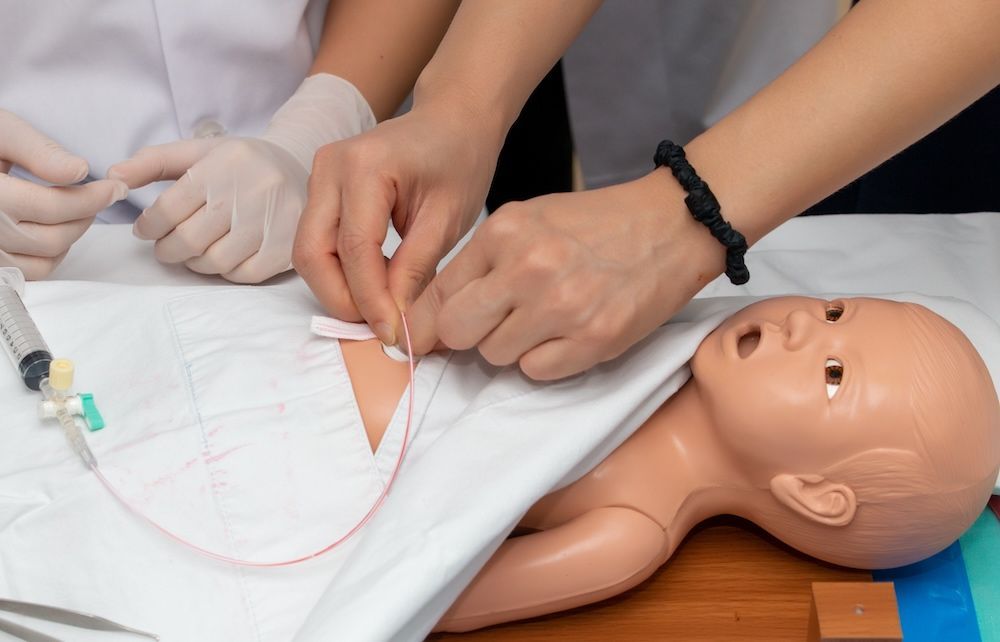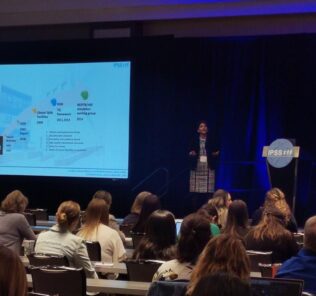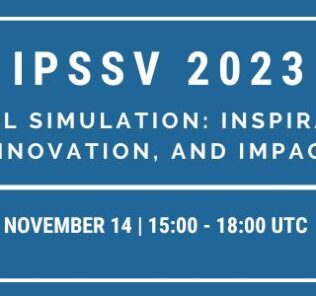Three Scenarios to Improve Clinical Outcomes with Low Fidelity Pediatric Simulators
Low-fidelity clinical simulation scenarios are an incredibly important utility in any pediatric healthcare simulation program. Despite the simplicity of low-fidelity clinical simulation scenarios, there are always considerations to be made as a facilitator. Often, low-fidelity clinical simulations are more complex to facilitate than they appear on the surface. This article by Erin Carn-Bennett, MSN, RN, will explore the top three suggested low-fidelity clinical simulations for a pediatric clinical environment.
Achieving Effective SimZones with Low-Fidelity
Roussin and Weinstock (2017) explain that “the complexity and volume of simulation-based learning programs have increased dramatically over the last decade, presenting several major challenges for those who lead and manage simulation programs and centers.” The team recommend “SimZones” as a system of organization for simulation-based learning which can alleviate the problems associated with the five associated challenges with simulation-based learning.
Sponsored Content:
Zone one clinical simulation scenarios as side-by-side mentorship or coaching. Zone one clinical simulation scenarios are a foundational instructor style of healthcare simulation. Although a high-fidelity manikin may be utilized for this style of clinical simulation, the use of a lower-fidelity manikin or features is more likely in a foundational instructor style of clinical simulation scenario delivery. Pause and discuss the debriefing methodology built within the clinical simulation experience that works well for the zone one style of clinical simulation, particularly in a low-fidelity clinical simulation.
If zone two is the style of clinical simulation delivery selected, then as faculty for the clinical simulation scenarios, the role will be as a facilitator rather than an instructor. This means a more hands-off approach as a faculty member that allows the team to explore and enforce emergency algorithms, followed by a pause and discussion-style debrief afterward. Low-fidelity can still be utilized as a style of clinical simulation and remain effective for zone two scenarios. As a facilitator in the clinical simulation, there will be less presence directly within the clinical simulation as the scenario plays out.
Low-Fidelity Can Still Produce Big Outcomes
Low-fidelity clinical simulation is often underrated and undervalued. Benefits of low-fidelity clinical simulation include less set-up time, less technology dependence, less faculty staff required to run a scenario, lower technology failure rate, and less intimidation of the technology for participants new to clinical simulation. As much as the role of instructor in a high-fidelity clinical simulation course can be a lot of fun, don’t underestimate the value of time and money in a low-fidelity clinical simulation. This is particularly relevant for an environment with limited time and resources for their clinical simulation programs.
Sponsored Content:
Airway Scenario Example: Perform a zone one clinical simulation with the use of a Laerdal QCPR baby or junior manikin to do basic airway maneuvers such as a bag valve mask used to ventilate the patient and chest compressions. Use the Bluetooth feature to give feedback on QCPR performance via a phone or tablet. Equipment required will be a Laerdal pediatric QCPR manikin, a monitor to use via either phone or tablet, and a bag valve mask. As this is a zone one clinical simulation, the faculty member will be an instructor with side-by-side mentorship. As airway and compression skills decay within three months, even the most experienced clinicians may require corrective instruction or tweaks to their techniques.
For more advanced groups or if a teamwork skills option is required in a zone two scenario, use the Laerdal QCPR manikin in isolation. The scenario for this situation can be a collapsed child who needs CPR for the initial response to practice teamwork skills in the initial minutes of an emergency.
Seizure Scenario Example: A zone one or zone two seizure scenario could be another option on a Laerdal QCPR baby manikin with a Simpl monitor. Verbal cues will be required by the scenario director to give information to participants about the type of seizure and whether the patient is still in a seizure or not. Simpl Monitor is a free clinical simulation app that adds instant fidelity and realism to a clinical simulation scenario. Equipment required would be a Laerdal QCPR manikin, two devices to run and display a Simpl Monitor, and the local organization’s emergency trolley.
A zone one scenario would be a pause and discuss debrief methodology, and zone two would allow a team to work through an emergency seizure algorithm with a plus delta style of debrief at the end of the clinical simulation scenario. For the more advanced group of participants, more complex airway issues demonstrated through verbal cues from the clinical simulation scenario director and noise cues from the monitor will push greater urgency and pressure to provide care faster to the patient.
View the HealthySimulation.com LEARN CE/CME Platform Webinar Pediatric Simulation Research: Resources from the International Pediatric Simulation Society (IPSS) to learn more!
Trach Tube Scenario Example: A pediatric blocked tracheostomy clinical simulation scenario on a static low-fidelity Laerdal QCPR manikin is possible with a tracheostomy tube passed into the skin of the neck or taped to the manikin if no tracheostomy stoma is available on the manikin. A simple scenario stem of a patient with a tracheostomy, their background history, and visual cues of shortness of breath on assessment/visually a blocked tracheostomy tube should guide participants to emergency management of a blocked tracheostomy. The scenario director may need to add verbal cues such as “the patient’s eyes are bulged, and they are short of breath” to add urgency to the care of the simulated patient.
Again, the use of an app such as Simpl adds simple fidelity to the scenario with alarms from the monitor. Depending on the host organization’s policy, ensure the usual tracheostomy patient equipment and resources are available for participants in the clinical simulation scenario. This may include any relevant patient notes or resources or a clinical simulated patient emergency tracheostomy equipment from home that is available for use in the scenario.
Add some fidelity to the scenario by placement of some blue tack in the bottom of the blocked tracheostomy in the manikin (or super glue) so that the sensation of the tracheostomy blockage is real for participants. If this is not possible, the scenario director can give verbal cues of sensations when attempts are made to suction the tracheostomy tube. A pause and discuss or Plus-Delta debrief methodology can be incredibly effective in this clinical simulation scenario.
This article has explored three low-fidelity clinical simulation scenarios for pediatrics. Scenarios discussed include basic airway and compression-based scenarios, pediatric seizures, and pediatric blocked tracheostomy. Scenarios were suggested with the use of the SimZones approach. Although low-fidelity clinical simulation scenarios require less technology dependence and set-up, close consideration and preparation will set clinical simulation programs up for success in the long run.
View the Latest Pediatric Simulation Resources!
Erin Carn-Bennett is a Simulation Nurse Educator for the Douglas Starship Simulation Programme in Auckland, New Zealand. Carn-Bennett has her Masters of Nursing and has an extensive nursing career within pediatric emergency and also nursing management. She is passionate about debriefing and all things simulation. Carn-Bennett is a member of the IPSS board of directors. Carn-Bennett is the lead host of the podcast Sim Nurse NZ.
Sponsored Content:


















